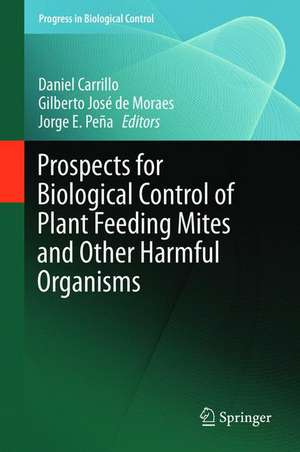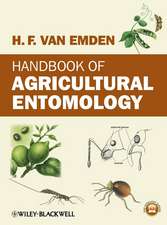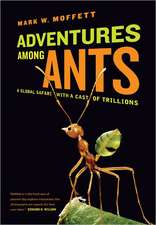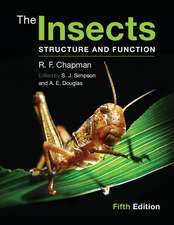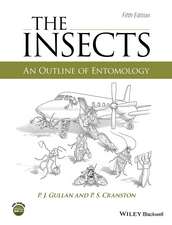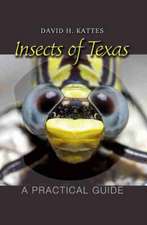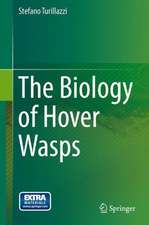Prospects for Biological Control of Plant Feeding Mites and Other Harmful Organisms: Progress in Biological Control, cartea 19
Editat de Daniel Carrillo, Gilberto José de Moraes, Jorge E. Peñaen Limba Engleză Hardback – 13 mai 2015
| Toate formatele și edițiile | Preț | Express |
|---|---|---|
| Paperback (1) | 642.68 lei 43-57 zile | |
| Springer International Publishing – 17 oct 2016 | 642.68 lei 43-57 zile | |
| Hardback (1) | 649.06 lei 43-57 zile | |
| Springer International Publishing – 13 mai 2015 | 649.06 lei 43-57 zile |
Din seria Progress in Biological Control
- 18%
 Preț: 952.57 lei
Preț: 952.57 lei - 18%
 Preț: 1222.01 lei
Preț: 1222.01 lei - 18%
 Preț: 1381.58 lei
Preț: 1381.58 lei - 18%
 Preț: 955.25 lei
Preț: 955.25 lei - 18%
 Preț: 956.33 lei
Preț: 956.33 lei - 15%
 Preț: 632.19 lei
Preț: 632.19 lei - 24%
 Preț: 1054.21 lei
Preț: 1054.21 lei - 15%
 Preț: 657.25 lei
Preț: 657.25 lei - 18%
 Preț: 1412.20 lei
Preț: 1412.20 lei - 18%
 Preț: 942.76 lei
Preț: 942.76 lei - 24%
 Preț: 797.37 lei
Preț: 797.37 lei - 18%
 Preț: 1117.03 lei
Preț: 1117.03 lei - 18%
 Preț: 948.16 lei
Preț: 948.16 lei - 15%
 Preț: 652.17 lei
Preț: 652.17 lei - 15%
 Preț: 653.14 lei
Preț: 653.14 lei - 18%
 Preț: 956.81 lei
Preț: 956.81 lei - 18%
 Preț: 1234.77 lei
Preț: 1234.77 lei - 18%
 Preț: 936.29 lei
Preț: 936.29 lei - 18%
 Preț: 1225.94 lei
Preț: 1225.94 lei
Preț: 649.06 lei
Preț vechi: 763.60 lei
-15% Nou
Puncte Express: 974
Preț estimativ în valută:
124.20€ • 130.00$ • 103.37£
124.20€ • 130.00$ • 103.37£
Carte tipărită la comandă
Livrare economică 31 martie-14 aprilie
Preluare comenzi: 021 569.72.76
Specificații
ISBN-13: 9783319150413
ISBN-10: 3319150413
Pagini: 350
Ilustrații: XIV, 328 p. 32 illus., 26 illus. in color.
Dimensiuni: 155 x 235 x 25 mm
Greutate: 0.66 kg
Ediția:2015
Editura: Springer International Publishing
Colecția Springer
Seria Progress in Biological Control
Locul publicării:Cham, Switzerland
ISBN-10: 3319150413
Pagini: 350
Ilustrații: XIV, 328 p. 32 illus., 26 illus. in color.
Dimensiuni: 155 x 235 x 25 mm
Greutate: 0.66 kg
Ediția:2015
Editura: Springer International Publishing
Colecția Springer
Seria Progress in Biological Control
Locul publicării:Cham, Switzerland
Public țintă
ResearchCuprins
1. Mesostigmata as Biological Control Agents, with Emphasis on Rhodacaroidea and Parasitoidea.- 2. Potential of Ascidae, Blattisociidae and Melicharidae (Acari: Mesostigmata) as biological control agents of pest organisms.- 3. The potential of free-living Laelapid mites (Mesostigmata: Laelapidae) as biological control agents.- 4. Macrochelid Mites (Mesostigmata: Macrochelidae) as Biological Control Agents.- 5. The Phytoseiidae (Acari: Mesostigmata) as biological control agentes.- 6. Prostigmata (Acari: Trombidiformes) as biological control agentes.- 7. Stigmaeidae.- 8. The Erythraeoidea (Trombidiformes: Prostigmata) as biological control agents, with special reference to the genus Balaustium.- 9. The Cheyletoidea (Prostigmata), with special reference to the potential of Cheyletus malaccensis Oudemans as biological control agent of post-harvest pests.- 10. Food Web Engineering to Enhance Biological Control of Tetranychus urticae by Phytoseiid Mites (Tetranychidae: Phytoseiidae) in Citrus.- 11. Past, Present and Future: Biological Control of Spider Mites on California-grown avocados.- 12. Mite Pathogens and their use in Biological Control.
Textul de pe ultima copertă
The history of biological control of harmful organisms by mites is marked by outstanding achievements with a few natural enemies. The focus has been mostly on mites of the family Phytoseiidae for the control of plant feeding mites. This is an important family of acarine predators of plant pest mites, which are effectively used in agriculture worldwide. Besides the vast knowledge in several species in this family, there are as well many opportunities for other biological control agents, represented in an array of organisms which are constantly found by researchers worldwide. This has resulted in an increasing interest in predatory mite species within other families of the Acari orders Mesostigmata and Prostigmata, among others. This book compiles important developments with predatory mite species within the families Ascidae, Blattisociidae, Melicharidae, Laelapidae, Macrochelidae, Phytoseiidae, Stigmaeidae, Erythraeidae and Cheyletidae, which are emerging as important tools for integrated pest management. Pathogenic organisms attacking mites and the improvement of management techniques are also a subject of this book. The potential and gaps in knowledge in biological control using predatory mites and mite pathogens are addressed.
Caracteristici
Resources for biological control of plant feeding mites, small insects and flies Long-term investigations on the practical use of predatory mites targeting pest mites are documented Updated evaluation of the gaps in the development of new biological control agents Comprehensive and updated analyses of the potential of several groups of potential biological control agents of mites and some small harmful insects
